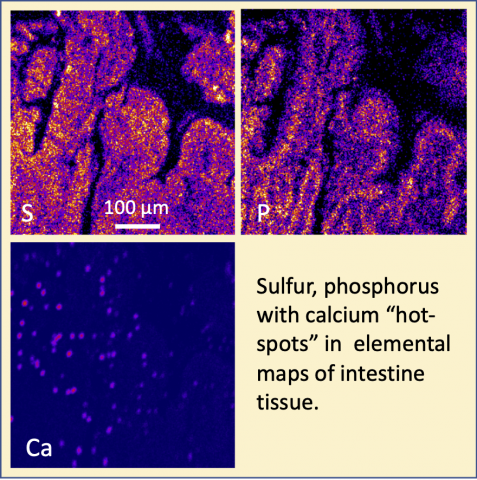Physics Researchers Make HIV-Related Discovery
Mon, 05/18/2020 - 3:45pmPhysics researchers teamed up with New Iberia Research Center and made a surprising discovery related to HIV using high resolution micro-Particle-Induced X-ray Emission (PIXE).

Over the past year, a team of researchers from the Ray P. Authement College of Sciences have been taking a retrospective look at the distribution of heavy elements important for life in archived tissue-block samples from the intestines of monkeys that were normal or had been infected with Simian Immunodeficiency Virus (SIV), the monkey analogue of HIV that causes AIDS. Using the advanced analytical instruments to make microscopic images of different elements at the Louisiana Accelerator Center (LAC) the researchers lead by Prof. Harry J. Whitlow from Physics who is Director of the LAC and Prof. François Villinger Director of the New Iberia Research Center (NIRC) found unexpected “hot-spots” with high concentrations of some elements such as Ca (above) and even including the toxic element lead. The Team also included Dr. Naresh Deoli (Physics and LAC), Armin de Vera (LAC) and Karen Morgan from the NIRC. Prof. Whitlow remarked; “What was remarkable was the observation of hot-spots with high concentrations some elements that differed between infected and non-infected animals. The lead hot-spots were a real surprise that were seen in very old samples were it is most likely the monkeys had been peeling and eating lead paint from the cages!”
The original paper is published in Physica Status Solidi (A) https://onlinelibrary.wiley.com/doi/abs/10.1002/pssa.202000107
